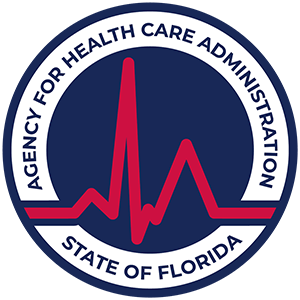Relapse Meaning Prevents Overdose
Learn how relapse meaning prevents overdose with vital strategies and insights for lasting recovery and safety.

Understanding Addiction Relapse
Understanding the nuances of addiction relapse can help individuals recognize early signs and take proactive measures to prevent it. Relapse is a complex process that unfolds in distinct stages and is influenced by various risk factors.
Stages of Relapse
Relapse consists of three key stages: emotional relapse, mental relapse, and physical relapse. Recognizing the signs associated with each stage can facilitate timely interventions and support.
StageDescriptionCommon SignsEmotional RelapseInitial stage characterized by behaviors that set the groundwork for future relapse.Isolation, poor sleeping or eating habits, denial of risk. (NCBI)Mental RelapseA stage where the individual wavers between the urge to use and the desire to stay sober.Cravings, reminiscing about past use, planning a relapse. (NCBI)Physical RelapseThe act of returning to substance use after a period of sobriety.Resuming substance use behaviors previously avoided.
The early recognition of signs and symptoms in each stage allows for preventative interventions. Effective strategies can include therapy, skills development, medications, and monitoring to help minimize risks of a return to substance use [1].
Risk Factors for Relapse
Several risk factors can increase the likelihood of relapse among individuals recovering from addiction. Some of the significant contributors include:
Preventing relapses is a vital part of the recovery process. The acknowledgment of common risk factors can lead to more effective preventive measures. Understanding the ways to prevent relapse can provide invaluable support to individuals in recovery.
For further exploration of the implications of relapse, including its impact on treatment and recovery, individuals are encouraged to learn more about how to use the term "relapse" and differentiate between slip vs. relapse. Recognizing four important things about relapse can also enhance understanding of this critical aspect of addiction recovery.
The Danger of Overdose in Relapse
Understanding the relationship between relapse and overdose is critical for individuals grappling with addictions. When a person returns to substance use after a period of non-use, the risk of overdose significantly increases.
Tolerance and Overdose Risk
Tolerance refers to the body's reduced response to a drug after repeated use, which leads individuals to consume larger amounts to achieve the desired effect. When someone has been sober for an extended period, their tolerance drops. This reduction means that a dose that was once manageable can become dangerously high and potentially fatal upon returning to drug use.
This overdose risk is especially high after detoxification or rehabilitation programs, as individuals may return to using substances at their previous levels without realizing their bodies can no longer handle that amount. The WebMD states that statistics show the odds of a fatal overdose are highest within the first four weeks after treatment begins and in the four weeks following its conclusion.
Time PeriodOverdose RiskFirst 4 weeks of treatmentHigh4 weeks after treatment endsHighExtended SobrietyIncreased susceptibility when returning to previous doses
Individuals who have been on medications like naltrexone may be particularly vulnerable if they skip doses or use soon after stopping the medication [2]. Understanding these risks is essential for anyone who has previously experienced addiction.
Management of Overdose Risks
To mitigate the risks of overdose, it is crucial for individuals to take proactive steps upon returning to substance use. Keeping naloxone (Narcan) on hand can be a lifesaving measure in cases of opioid overdose. This medication is designed to quickly reverse the effects of an overdose and can be administered by bystanders until emergency services arrive.
Awareness and education are key components in managing overdose risks. Engaging in support groups and following through with addiction treatments can provide additional layers of safety. For those who want to learn more about minimizing the chances of relapse, consider reviewing our article on ways to prevent relapse.
Implementing a solid relapse prevention plan, staying connected with supportive peers, and regularly consulting with addiction specialists can help reduce the likelihood of returning to substance use and, consequently, the potential for overdose. Understanding how to use the term “relapse” accurately can also aid in recognizing the critical moments that lead to substance use.
Strategies for Preventing Relapse
Preventing relapse is a critical component of the recovery journey for individuals dealing with addiction. By exploring long-term prevention methods and effective interventions, individuals can reduce their likelihood of experiencing setbacks.
Long-term Relapse Prevention
Long-term strategies for managing relapse focus on minimizing the chances of returning to substance use. Success in maintaining sobriety often hinges on tailored approaches that cater to the specific needs of individuals who are dependent on alcohol or other substances. Effective long-term relapse prevention strategies include:
StrategyDescriptionTherapyUtilizing cognitive-behavioral therapy (CBT) to equip individuals with coping skills and strategies for managing triggers. NCBI BookshelfMedicationsImplementing pharmacological solutions such as disulfiram, naltrexone, and acamprosate for alcohol use disorders, or methadone and buprenorphine for opioid use disorders to help reduce relapse risks. NCBI BookshelfMonitoringRegular check-ins and assessments to ensure adherence to treatment plans and to identify potential triggers early.Peer SupportEngaging in support groups or recovery communities that provide encouragement and accountability throughout the recovery process.Emerging InterventionsExploring new therapies or practices that may enhance recovery efforts, such as mindfulness-based interventions.
Establishing a comprehensive and individualized relapse prevention plan is essential for effective management during the recovery journey.
Effective Preventative Interventions
Several effective interventions have been identified to aid individuals in preventing relapse. These interventions incorporate a combination of support, therapy, and monitoring, leading to more robust recovery outcomes. Key interventions include:
Implementing these strategies and interventions not only aids in preventing relapse but also significantly reduces the risk of overdose, reinforcing the concept that understanding relapse meaning prevents overdose. For more guidance on this topic, individuals may refer to our resources on ways to prevent relapse and four important things about relapse.
Evidence-based Treatments for Addiction
Effective treatment for substance use disorders is essential for reducing the risk of relapse and subsequently preventing overdose. Evidence-based treatments are designed to address the complexities of addiction, focusing on improving health outcomes and reducing harm.
Impact of Treatment on Overdose Deaths
Evidence shows that high-quality treatments for substance use disorders can significantly reduce not only substance use but also related health harms and overdose deaths. These treatments aim to enhance social functioning by addressing barriers to accessing effective care, thereby encouraging engagement and retention in treatment [4].
Research indicates that relapse is a common occurrence for individuals recovering from addiction; about 40-60% relapse within 30 days of leaving an inpatient treatment facility, and up to 85% relapse within the first year. The implementation of robust treatment methods not only helps in reducing these relapse rates but also plays a crucial role in lowering the risk of fatal overdoses.
Timeframe Post-TreatmentPercentage of Individuals RelapsingWithin 30 days40-60%Within 1 yearUp to 85%
Government Initiatives for Overdose Prevention
In response to the escalating overdose crisis, governmental initiatives like the NIH HEAL Initiative have been established to target overdose deaths effectively. This initiative aims to reduce overdose fatalities by 40% through proven prevention and treatment interventions across 67 communities in four states heavily affected by the opioid epidemic [4].
Such programs emphasize the importance of access to high-quality care for those suffering from substance use disorders. By implementing comprehensive support systems and focused interventions, these initiatives strive to mitigate the risks associated with addiction, including relapse and overdose.
For individuals seeking ways to prevent relapse, understanding the importance of evidence-based treatments and supportive government programs is crucial in their recovery journey. Comprehensive approaches not only promote recovery but also contribute to long-term health and well-being.
Common Reasons for Addiction Relapse
Understanding the common reasons for addiction relapse is crucial in developing effective prevention strategies. Two significant factors contributing to relapse are withdrawal symptoms and environmental triggers.
Withdrawal Symptoms and Relapse
Individuals recovering from alcohol or drug addiction often experience varying degrees of withdrawal symptoms when they stop using their substance of choice. These symptoms can range from mild to severe and may include:
Withdrawal SymptomsDescriptionNauseaA feeling of sickness or queasiness.Hot and Cold SweatsSudden changes in body temperature leading to sweating.RestlessnessFeeling unable to remain still.VomitingExpulsion of stomach contents.DiarrheaFrequent, loose bowel movements.InsomniaDifficulty in falling or staying asleep.Muscle AchesGeneral body pain and discomfort.
Withdrawal from substances such as alcohol and benzodiazepines can be deadly and cause seizures [5]. For those in recovery, managing these symptoms plays a vital role in reducing the likelihood of relapse. If individuals begin to experience symptoms, they may turn back to their substance of choice for relief, highlighting the need for support systems and preventative measures.
Environmental Triggers for Relapse
Environmental influences also play a critical role in addiction relapse. Individuals in recovery often surround themselves with likeminded individuals who indulge in substance use, which can pose a significant risk. Isolation and boredom are other substantial triggers for relapse (Family Addiction Specialist), especially during early recovery. When individuals have excessive free time, they're left alone with their thoughts and emotions, which may lead to cravings and temptation.
Part of the recovery process involves setting healthy boundaries and avoiding situations and social circles that involve substance use. Engaging in recovery activities can provide support and reduce the chances of falling back into old habits. For more strategies on preventing relapse, check out our article on ways to prevent relapse.
Recognizing these common reasons can help individuals and their support networks implement effective strategies for managing risks associated with relapse. Understanding the terms and definitions related to relapse can also aid in better communication and awareness of the recovery process.
Social Influences on Substance Use
Understanding the social influences on substance use is crucial in addressing addiction relapse. Both peer pressure and parental support play significant roles in shaping behaviors related to drug use and relapse outcomes.
Peer Pressure and Overdose Risk
Peer pressure emerges as a pivotal factor in substance use, particularly among adolescents. Research indicates that social influences can exert a substantial impact on drug use and potential overdose scenarios. When individuals are surrounded by peers who use drugs, the likelihood of engaging in similar behaviors increases significantly. This social dynamic can create an environment where substance use is normalized, making it difficult for individuals to resist engaging in risky behaviors.
A study highlights that education and awareness programs aimed at informing youth about the dangers of drug use can mitigate the adverse effects of peer influence [6]. Therefore, fostering an environment that promotes positive social interactions while educating youth can be instrumental in preventing addiction relapse and reducing overdose risks.
Peer Influence FactorImpact on Substance UseAssociation with peers who use drugsIncreased likelihood of substance useSocial gatherings centered around drug useElevated risk of overdoseNorms and attitudes towards drug use within peer groupsReinforcement of risky behaviors
Parental Support and Risk Reduction
Parental support is another critical factor that influences addiction relapse. A lack of parental supervision and guidance has been linked with a heightened risk of adolescents engaging in substance use. Parents who are actively involved in their children's lives can help foster protective factors that reduce the likelihood of risky behaviors.
The provision of education, open communication, and emotional support from parents can significantly decrease the inclination towards drug use. Parents play a vital role in establishing boundaries and modeling healthy behaviors. Initiatives aimed at enhancing parental involvement, such as educational workshops and support groups, are beneficial in combating the risks associated with substance use among youth [6].
Parental Support FactorEffectiveness in Reducing RiskOpen communication about substance useHighMonitoring and supervision of activitiesHighInvolvement in children’s livesVery High
Educating both parents and adolescents about the importance of these influences can provide significant leverage in preventing ways to prevent relapse. Combining parental support with effective prevention strategies can lead to meaningful reductions in substance use and overdose rates. More information regarding the terminology associated with addiction can be accessed through our article on how to use the term “relapse” and the nuances between a slip and a relapse can be explored in slip vs. relapse.
References
[2]:
[3]:
[4]:
[5]:
[6]:














.svg)








